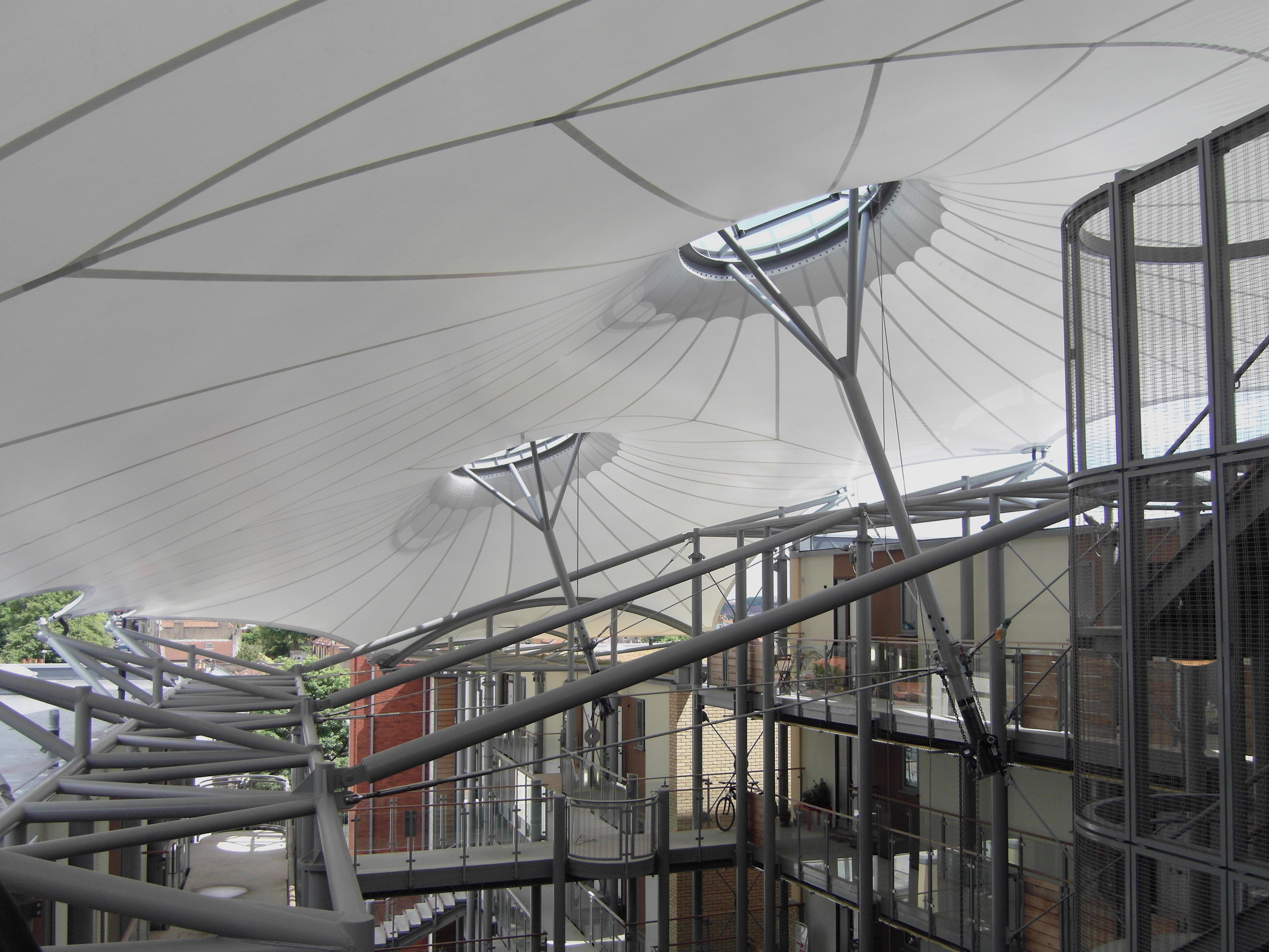
An Introduction To Form-finding Tensile Structures
Tensile structures defy conventional architectural norms, offering stunning aesthetics, versatility, and durability for less than the cost of a conventional structure. However, unlike their rigid counterparts, tensile structures derive their strength and stability from the inherent tension in their materials. Not only does this define their strength but also their shape, so tensile structure design is considerably more complex than the design of conventional structures.
The form-finding process is critical to determining the shape of these structures, influenced by key factors such as span, loading conditions, material properties and architectural aspirations, which we will discuss in this article.
What Is Form-Finding Of Tensile Structures?
Form-finding, as the name suggests, is the art of determining the most suitable shape for a tensile structure and is the first and most important stage in tensile structure design.
The process involves determining minimal surfaces, often those which assume the characteristics of anticlastic – or doubly-curved – shapes, which are subject to pre-stressing, further complicating the design. Two common numerical methods employed in form-finding are:
- Dynamic Relaxation (DR): A numerical method used in structural engineering to iteratively adjust a structure's shape to achieve an optimal balance between internal forces and external loads to ensure stability.
- Force Density (FD): In which force distribution is optimised within a tensile structure to achieve an equilibrium of forces at mesh nodes and achieve stability.
Achieving a balance between the internal forces and external loads delivers a stable configuration, which ensures the structure can withstand the forces to which it will be exposed, such as wind loading.
Exploring Types Of Tensile Structures
During form-finding, designers typically gravitate towards three fundamental shapes:
- Hypar, or Hyperbolic Paraboloid: A three-dimensional, saddle-shaped surface that is characterised by opposite-curving parabolic sections.
- Barrel: A curved structure that resembles the shape of a cylindrical barrel.
- Conic: A structural form that features a tapering, cone-like geometry.
All three forms offer exceptional load-bearing capacity and aesthetic elegance and are the foundation for countless variations, each with unique characteristics and advantages. Additionally, air-supported and inflated structures are also possible, which can generate even more creative possibilities.
Computational Tools For Form-Finding
To navigate the complexities of form-finding and help bring architectural visions to life, we harness advanced computational tools, including proprietary commercial software and in-house computational design scripts. These resources enable us to achieve unparalleled flexibility in shaping tensile structures to deliver architectural vision while retaining suitable strength and resilience when exposed to external forces and pressures.
Contact Us Today
If you are interested in exploring the limitless potential of tensile structures or need expert assistance with a design project, please get in touch with Neil Holloway directly by email at nholloway@fentonholloway.com.

/Neil-Holloway-Tensile-Structures-Long.webp)
.png?width=365&height=215&name=Brochure%20CTA%20(1).png)